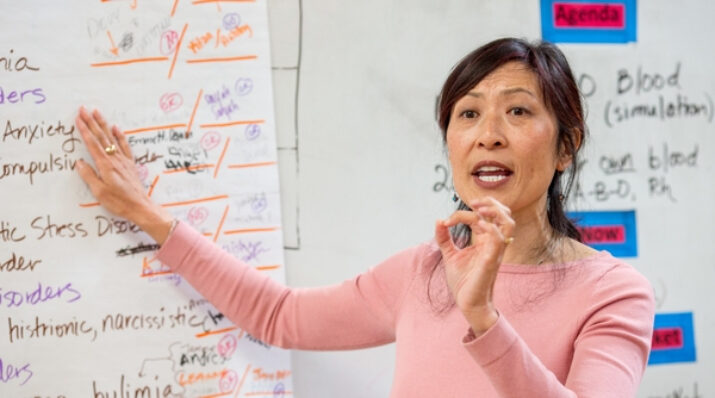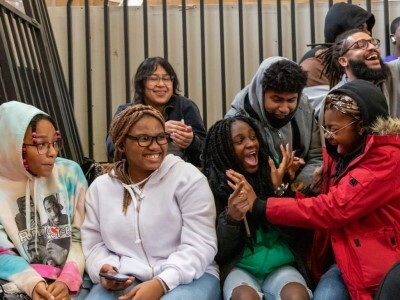Enabling Change
Early Planning Minimizes Project Disruptions
Topics

Next generation learning is all about everyone in the system—from students through teachers to policymakers—taking charge of their own learning, development, and work. That doesn’t happen by forcing change through mandates and compliance. It happens by creating the environment and the equity of opportunity for everyone in the system to do their best possible work.
Sustaining a new approach to improve student success requires long-term financial, operational, and cultural commitments—always a challenge to secure, but more likely to occur with early planning.
“CPCC is committed to sustaining the Online Student Profile Learning System at the College and to broadening its use to ensure that all students benefit from assessment tools, student profiles, and an advising history.” —Project Team Member, Central Piedmont Community College (NC)
Sustaining a new approach to improve student success requires long-term financial, operational, and cultural commitments—always a challenge to secure, but more likely to occur with early planning.
The Building Blocks for College Completion grantees’ experiences tackled this in different ways:
Counteract potential disruptions caused by turnover through succession planning
In its final evaluation report of NGLC higher ed tech innovation grant projects, SRI International reported that turnover in key positions was a commonly expressed challenge.
Indeed in their final project progress reports, several grantees bemoaned the delays and negative impacts caused by project staff turnover, something that should be expected as a possibility. As just one example, Abilene Christian University’s Mobile Enhanced Inquiry-Based Learning (MEIBL) project lost one of its grant authors, its grant evaluator, and its grant financial manager during the 18-month grant term. The project team worked hard to accommodate these personnel changes, but reported that it was a challenge to regain traction. Grooming potential manager replacements and cross training can minimize the loss of project team members.
Consider a self-perpetuating design that intrinsically fosters program longevity
SRI observed that some higher ed tech innovation grant projects inherently promoted their own continuation. These projects enabled faculty to re-conceptualize resources to meet their institution’s needs and to develop new educational objects; as a result, the projects self-generated increasingly rich content for other users.
The Open University’s Bridge to Success program featured flexibility and freedom, such as developing courses that could be taught standalone or face-to-face. Because of this, project lead Patrick McAndrew noted in a blog post that adopters came up with various ways to use it: different paths through the courses, different methods of support, and different means to guide users to address their requirements. Instructors across many subject areas and courses can tailor these technology-based resources to meet their specific needs.
Use your student success innovation to advance key institutional goals.
This occurs when the innovation aligns and embeds within institutional culture.
For example, CSU Northridge’s Hybrid Lab project resulted in a self-sustaining cycle of investment and success. The project increased student success in blended gateway math courses, reducing the number of students who needed to repeat classes—thus making it possible for the institution to offer fewer sections. These savings are in part redirected to support additional (however modest) instructional costs the model requires. The net savings are used to incentivize further scaling up.
Lowering the number of courses that institutions need to offer for developmental and introductory-level courses frees institutional funds for transforming additional courses to the blended model, reducing or eliminating the need for external funding sources to enable such transformations.
The Seventh of Seven Lessons
Long-term planning is the seventh of seven lessons learned that we distilled from the experience of grantees funded in NGLC’s first wave of grantmaking. You can read about the other six here:
#1. Seeking Stronger Student Outcomes? Try Making Comprehensive Changes in Teaching & Learning
#2. Active, Self-paced, Data-driven Learning Leads to Stronger Student Outcomes
#3. The Secret to Defeating the Status Quo in Education? Engage Faculty
#4. Student as Designer: Making EdTech that Increases Student Success
#5. Launching a New Innovation? Don’t Go It Alone
#6. An Operations Checklist for Adopting Higher Ed Tech Innovations
For a complete overview of the outcomes of this grant program, read 7 Ways to Use Tech to Improve College Student Success and view the infographic. For background on the role of technology in student success, read Is Technology a Natural Enabler of Student Success?
Photo at top courtesy of Allison Shelley/The Verbatim Agency for American Education: Images of Teachers and Students in Action. CC-BY-NC-4.0.




